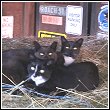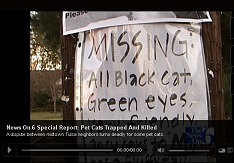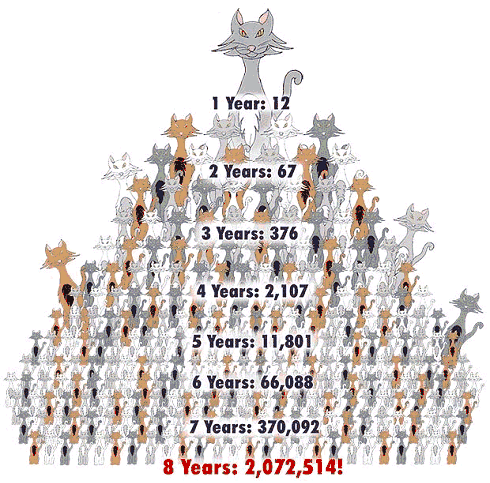Feral and Stray Cats
Cat Removal & Related Wildlife Whisperer, Inc., Services
To the best of our knowledge, The Wildlife Whisperer, Inc., is one of the few wildlife control companies who is willing to assist property owners with cat removal and cat trapping services. The required permits for cat removal and live trapping cats may vary by location but we can assist you if it is allowed to do so in your area.
We have special cat trapping and removal rates and work with many rescues, to secure homes for captured cats.
- Consultation (No Trap Options)
- Cat Removal & Trapping
- Trap, Neuter & Return Projects
Sometimes it is best to simply prevent the problem to start with, so we have provided some information below that might be helpful to you. If you are in Cape Coral, Fort Myers, Pine Island, Fort Myers Beach, Boca Grande, Sanibel Island, Captiva, or another area in Southwest Florida, we can also come to your home to consult with you regarding preventative steps to safeguard your specific property.
If your goals mandate removing a nuisance cat, particularly through trapping, please know that killing the captured feline is seldom necessary.
Most of our requests for cat removal are from folks in three situations:
- A home or business owner does not want to work with animal welfare or animal control and wants to pay to get rid of the cats.
- It recently got cold, the cats they fed all summer just went under the house to get warm and now their house smells like cat urine.
- The caller has been feeding the stray cats for the past few years and are alarmed at how their 3 cats turned into 33 cats. We will not trap or remove cats if the rescues and/or Animal Welfare office we are working with in your area is closed. Traps will need to be closed at times that we cannot take the cats to their next destination. If we are taking the cats to your veterinarian, the same applies.
Animal Control And Feral Cats
Animal control officers are underpaid, under equipped and under appreciated in most cases. The Wildlife Whisperer, Inc., says "hats off" to animal control officers all over the world for working with these unpredictable critters. Seeing cats going "crazy" in a trap - total self-destructive behavior - will make you think twice about trapping these animals, but many report never having a problem at all. Cats running wild creating issues is a problem caused by humans, not the cats. It is not the cat's fault. Next time you see your local animal control officer truck drive by, be certain to wave, they've earned it.
Leg Hold Traps & Lethal Methods
If you are interested in humanely getting rid of cats please be careful who you use and how they conduct business. Some people think cats are, and always will be, a nuisance and will do anything to get rid of cats.
This sad story found below covers a wildlife removal company who still was allowed to keep his trapping permit after being caught using leg hold traps and killing cats. Once again - be careful who you hire.
Problems Presented By Strays
Not every cat that roams across your property is necessarily wild. However, if a stray does decide to take up residence around your home, they can quickly multiply and create a multitude of problems.
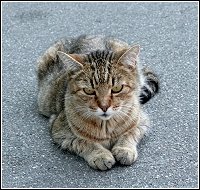
Cats become feral, or wild, when they are bred outside the "normal" household setting and without human interaction and domestication. In most states, by "official" definition, there are no feral cats, only "stray" cats let out by owners not obeying leash laws. Nuisance cat problems can vary by region, and even by country. Australia in particular has a large wild cat problem. Some states, such as Wisconsin, have a particularly bad wild cat problem and have consequently made it legal for residents to utilize lethal methods, such as non-humane cat traps, to control them.
Related concerns that come with strays taking up residence include rabies, fleas, ticks, lice, cat scratch fever and the damage they can do. Scratching posts for cats can be anything from the decorative pillars on your front porch, to your nice patio furniture. Their strong urine can easily destroy many metals and the smell will linger and also attract other cats.
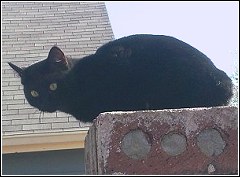
Most complaints we receive about feral cats are from people who had good intentions when they started feeding the one or two feral cats that showed up at their doorsteps. We typically get people wanting us to live trap and remove about one dozen cats when it gets cold outside and the cats, their kittens and all the skunks, raccoons, rats and opossums that also eat the cat food move under the crawlspace of their house.
When wild cats invade your home, barn or commercial property The Wildlife Whisperer, Inc., can help. We do offer cat removal services for clients who are willing to meet certain conditions, including checking captured cats for ownership and having them neutered before re-homed. We will not kill cats unless they require euthanization due to sickness or injury.
Nuisance Cat Causes And Prevention
There are many techniques to help control cat damage without using trapping or lethal methods. A motion sensing, infrared sprinkler can be utilized to break their habits as well as many other products on the market. Each situation can be very different. Sometimes it is just a matter of taking a moment to stop and think about what you might be doing that could be attracting the cats, for instance, if cats are eating birds at your bird feeder, quit feeding the birds and the cats will likely go away.
Feeding Cats Outdoors?
Feeding cats outdoors can quickly cause problems. Who else are you inviting to eat when you put cat food on the ground? In most cases, you can simply plan on changing the name "Fluffy" on the food bowl to "Bandito the Raccoon" or "Stinky the Skunk", because that is who may end up at the outdoor buffet. In the below photo you can see how feeding the cat has not only lured an opossum into the area but a skunk too!

That's right - skunks, raccoons, opossum, rats and mice will partake of the food, and that will invite snakes to pursue them. You just altered the eco-system - in spite of the fact that you wanted to do the right thing and feed the hungry cats. But for those times when there is no way around it, there are some ways to discourage wildlife from moving in for the food.
Stray Cat Solutions
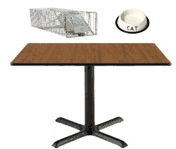
Pedestal tables can also be inexpensively custom built by securing a threaded pipe floor flange to your deck or concrete and another floor flange on top of the threaded pipe to secure a board to. You can somewhat protect the food from the weather by affixing a box with a hole large enough for cats to enter and feed.
An electronic dog or cat door can also help stop attempts to enter your home by wildlife brought in by feeding cats. Prevention can go a long way.
Feral Cat Reproduction Numbers
Well, as seen in the chart below, if one unspayed female, her mate, and all her offspring produce two litters every 12 to 16 months, with 2 to 2.8 surviving kittens per litter, in just four short years she and her mate will have been responsible for a legacy of over 2000 cats. And in eight years that number will multiply to over 2,000,000 cats!
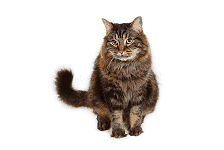

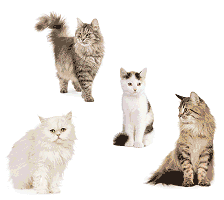
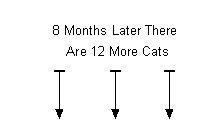
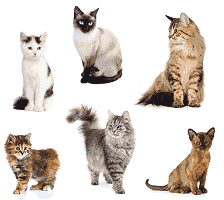
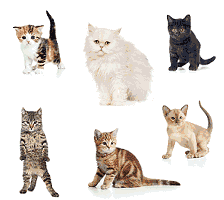
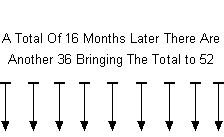
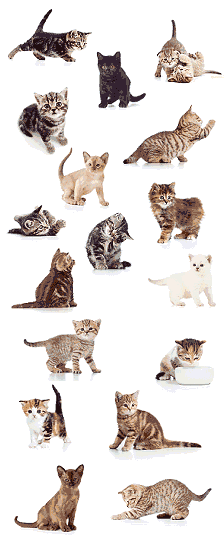
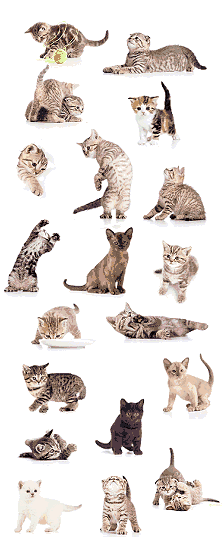
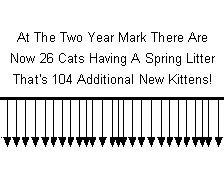
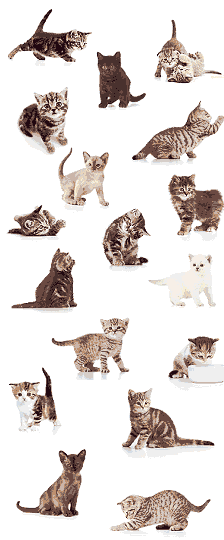
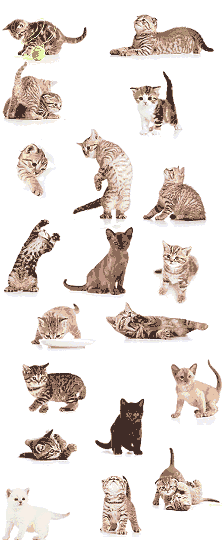
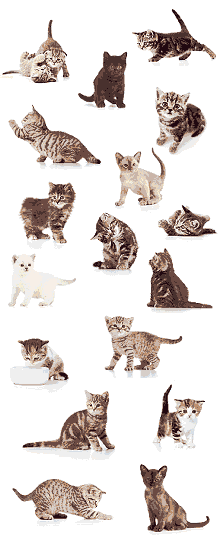
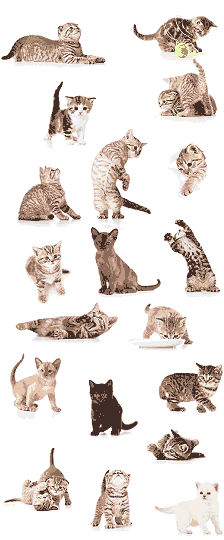
1242 SW Pine Island Rd., Suite 310
Cape Coral, Florida 33991-2126
help@totalwildlifecontrol.com





